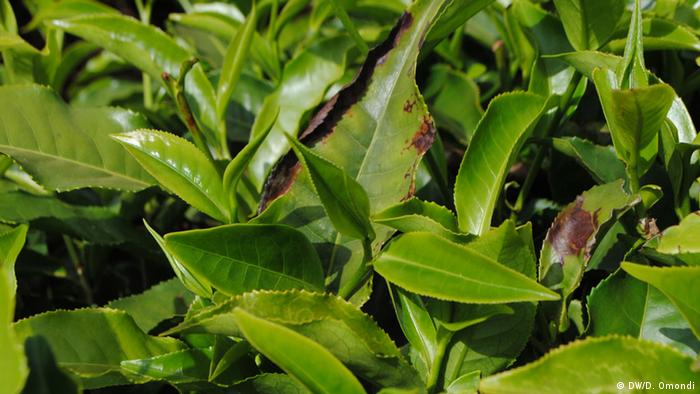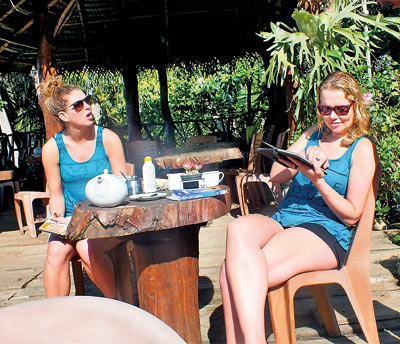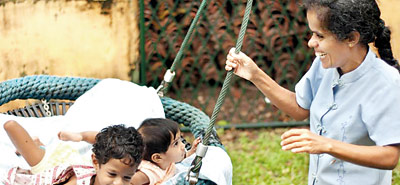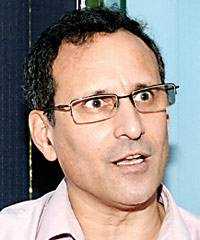Harvard training for Sri Lanka’s development drive officials
January 7, 2016, 6:57 am
By Lynn Ockersz
'Sri Lankan officials who would be playing a key role in fast-tracking this country's economic resurgence effort would be sent to the Harvard University's Centre for International Development in February for advanced training, Niranjan de Silva Deva Aditya (Nirj Deva), the Lankan-born Vice President of the International Development Committee of the European Parliament and an adviser to Prime Minister Ranil Wickremesinghe said. Deva Aditya is a driving force in the Sri Lanka Economic Forum which will be launched today at Cinnamon Grand, with high profile local and international participation.
Deva Aditya who is also the chairman of the European Parliament Delegation to the Korean Peninsular, besides being a former Member of the UK Government and a former Member of the UK Parliament told The Island Financial Review in an exclusive interview that the Forum being launched today is of tremendous importance to Sri Lanka. Besides fast-tracking Sri Lanka's economic growth drive it would be also all about putting this country on the correct development path. He explained that everything wrong is currently happening in Sri Lanka with regard to economic advancement and doing business. 'The wrong macro-economic models, the wrong checks and balances, the wrong approach to climate issues and many more wrongs are all here, he said.
'Sri Lanka must convert itself to an FDI-driven economy from one that is heavily dependent on loans but to get there you need to put in place here the correct investment climate. Foreign investors do not come to this country out of any fondness for it. If at all they come, it would out of consideration that they are getting a high return on their investment. All that would happen if we are a business-friendly country where 'Ease of Doing Business' would be an everyday reality, Deva Aditya explained. 'Currently our Ease of Doing Business ranking leaves much to be desired.'
'It is a joy to do business in Vietnam, a fast-growing economy in Asia. You need to go to only one official in Vietnam to get your investment project off the ground. But in Sri Lanka the foreign investor is faced with a plethora of rules and regulations and is driven from pillar to post to get his business going. In Sri Lanka you are expected to meet the Grama Sevaka first besides going to numerous other officials and institutions to launch your business. How nonsensical it is to get an investor to go to the Grama Sevaka? Where in the world do such things happen? Deva Aditya asked.
'These numerous bureaucratic bottlenecks and delays an investor faces in Sri Lanka are only opportunities for corrupt practices. We have to meet foreign investors half way by making the necessary changes to facilitate the Ease of Doing Business. If we streamline the process of launching businesses here we would get the relevant financial investment, new technologies and capital along with the necessary expertise. If we remove unnecessary regulations, we could facilitate investments. It takes seven years to launch a power plant in Sri Lanka, whereas it takes only three months to do so in Britain.
'One of the aims of the Forum is to train and educate this country's key officials and relevant stakeholders to facilitate and accelerate the growth process in Sri Lanka. Some of the attendees at the Forum would be ministers, deputy ministers, secretaries to ministries and officials from the President's and PM's offices, to name just a few. Our officials would interact at the Forum with some of the best minds on the development experience, most of them from Harvard University's Centre for International Development. Harvard is the conference. They are all being brought down by George Soros, Founder/chairman, Open Society Foundation. Some of the other leading lights in development and related fields who Sri Lankan personnel will get the opportunity to interact with and learn from are: Joseph E. Stiglitz, Nobel laureate and Professor of Economics, Graduate School of Arts and Science, Columbia Business School, Ricardo Hausmann, Director, Centre for International Development, Harvard University and Ljubica Nedelkoska, Growth Lab Research Fellow, Center for International Development, Harvard University, Deva Aditya explained.
Some other key aims of Sri Lanka which the Forum is expected to facilitate are: the creation of a million new jobs with good wages, identifying options governments have for overcoming macroeconomic vulnerabilities and fiscal imbalance, identifying policies which have been used elsewhere to transform comparative advantage and developing industries that can expand while paying higher wages, to name a few themes.
'One of the aims of the Forum is to train and educate this country's key officials and relevant stakeholders to facilitate and accelerate the growth process in Sri Lanka. Some of the attendees at the Forum would be ministers, deputy ministers, secretaries to ministries and officials from the President's and PM's offices, to name just a few. Our officials would interact at the Forum with some of the best minds on the development experience, most of them from Harvard University's Centre for International Development. Harvard is the conference. They are all being brought down by George Soros, Founder/chairman, Open Society Foundation. Some of the other leading lights in development and related fields who Sri Lankan personnel will get the opportunity to interact with and learn from are: Joseph E. Stiglitz, Nobel laureate and Professor of Economics, Graduate School of Arts and Science, Columbia Business School, Ricardo Hausmann, Director, Centre for International Development, Harvard University and Ljubica Nedelkoska, Growth Lab Research Fellow, Center for International Development, Harvard University, Deva Aditya explained.
Some other key aims of Sri Lanka which the Forum is expected to facilitate are: the creation of a million new jobs with good wages, identifying options governments have for overcoming macroeconomic vulnerabilities and fiscal imbalance, identifying policies which have been used elsewhere to transform comparative advantage and developing industries that can expand while paying higher wages, to name a few themes.













